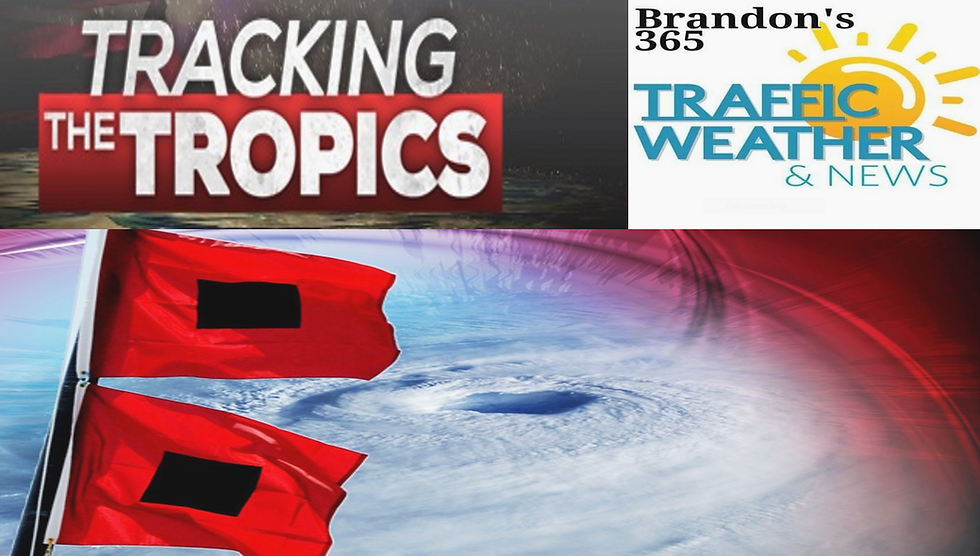The National Hurricane Center will start issuing Tropical Outlooks on May 15th.
- Brandon Shipp

- Apr 5, 2021
- 2 min read
The 2020 Atlantic hurricane season was the most active on record with a total of 30 named storms. Two of those storms (Arthur and Bertha) formed in May 2020. During the 2020 season, the NHC had to issue thirty-six "special" forecasts called Tropical Weather Outlooks prior to 1 June. These highlight areas in the Atlantic that need to be monitored for potential development. This year the National Hurricane Center will start issuing outlooks twice a day starting on May 15th. Named storms have formed prior to the official start of the hurricane season in about half of the past 10-15 years, including each of the past six years according to the National Hurricane Center. Sea surface temperatures, how much wind shear there is or lack of wind shear there is and if we have El Niño or La Niña often has major impacts on how a hurricane season turns out. When the water in the equatorial Pacific is warmer than average we have an El Niño. When they are cooler than average it’s known as a La Niña.
Current forecasts are calling for the existing La Niña pattern to shift to an ENSO-neutral phase by the late spring or early summer which means water temperatures in this zone of the Pacific will be closer to average. The big question at this time is whether or not the pattern shifts back to a La Niña by the later part of the hurricane season that is a factor I will be monitoring closely this Fall. If we have a Neutral phase through the entire hurricane season we could still have a fairly active season just probably not near as active as 2020 but if we have a La Niña again this Fall we could have a very active season. During La Niña patterns, there is little to no wind shear. Vertical wind shear is one of the biggest inhibitors of development for tropical systems. When there is less wind shear in the atmosphere, storms can develop and rapidly intensify. La Niña conditions were present during the peak of the major 2020 hurricane season. Remember, regardless of how active a season is or if it ends up being less active it only takes one storm to cause major problems and major damage. I'll have updates this summer and fall as we go throughout the 2021 hurricane season. No Matter The Weather I've Got You Covered!



















Comments